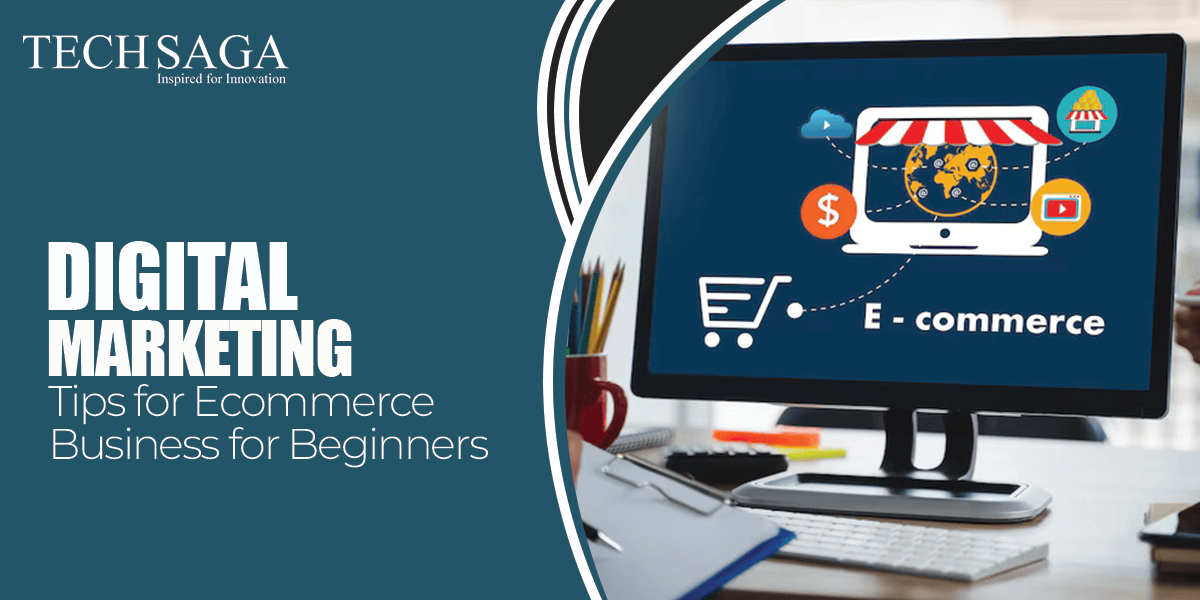Team Techsaga
Gain valuable insights and stay updated with the latest innovations through our engaging blog. Explore trends, technology advancements, and expert opinions to navigate the ever-evolving world of IT.
6 Proven Steps to Master Ecommerce Keyword Research
So, as more brands are shifting towards digital platforms, e-commerce businesses are experiencing explosive growth. However, increasing competitors and evolving consumer search behaviour challenge the visibility on search engines. Therefore, investing in e-commerce SEO services and mastering the Ecommerce Keyword Research as it is the backbone of a very successful online store.
Moreover, according to the recent report, 70% of consumers begin their shopping journey on search engines. This further shows the massive opportunity for e-commerce brands to carefully consider keywords to draw intent-driven traffic. But it’s all about choosing the right ones that drive clicks, conversions, and long-term growth.
So, through this blog, understand ecommerce keyword research in just 6 steps. Have a look!
Steps Involved in Mastering the Ecommerce Keyword Research
Step-by-step guide involves:-
Step 1: Understand Your Audience and Buying Intent
The first rule of Ecommerce Keyword Research is knowing who you’re speaking to. Your ideal buyer isn’t just looking for a “shirt” – they may be searching for a “slim-fit cotton white shirt for office wear.” So, the difference lies in intent.
Therefore, to understand your audience:
- Create buyer personas (age, gender, profession, shopping behavior)
- Use tools like Google Analytics and Facebook Insights to study demographics
- Also, track what your customers search for on your internal site search
So, when you know your audience’s needs, you can better match their intent with your product listings. Keywords must align with whether they are in the awareness, consideration, or purchase stage. For example, long-tail keywords such as “best organic skincare products for dry skin” target buyers who are closer to conversion compared to broader terms like “skincare.”
Step 2: Leverage Tools for Ecommerce Keyword Research
Modern SEO is data-driven. Don’t rely on guesswork. Instead, use proven tools to identify the most valuable keywords for your niche:
Top Tools for Ecommerce Keyword Research:
- Google Keyword Planner: Offers search volume and competition levels.
- Ahrefs / SEMrush / Ubersuggest: Reveal competitor keyword gaps and suggestions.
- AnswerThePublic: Shows popular queries and question-based searches.
- Amazon Search Bar: Great for seeing real-time buyer keyword trends.
So, let’s say you’re selling eco-friendly bags. Type “eco-friendly bags” into Ahrefs, and you may find long-tail variations like:
- “Eco-friendly lunch bags for kids”
- “Reusable grocery bags with compartments”
- “Sustainable tote bags for college students”
Therefore, by combining these tools, you’ll not only discover high-volume keywords but also hidden gems with low competition that are ripe for ranking.
Step 3: Focus on Long-Tail Ecommerce Keyword Research
Long-tail keywords are a goldmine for e-commerce. Why? Because they cater to specific search intent and often face less competition, eventually making them easier to rank for and more likely to convert.
For instance:
- Instead of targeting “laptop bags” (broad and competitive),
- Use “durable waterproof laptop bags for travel” (specific and buyer-focused)
Benefits of long-tail keywords:
- Higher conversion rates
- Better alignment with user intent
- Lower CPC in paid ads
- Also, improved voice search compatibility
Additionally, incorporate long-tail terms into product titles, meta descriptions, headers, and product descriptions for better SEO performance.
Step 4: Build a Branded Ecommerce Keyword Research Strategy
Many e-commerce stores underestimate the power of a branded keyword strategy. So, if customers know your brand, they will search for it directly or along with products you offer.
Examples of branded keyword usage:
- “Nike running shoes for men”
- “Samsung smart LED TV”
- “XYZ Store eco-friendly yoga mats”
Why it matters:
- Branded searches often come from loyal or returning customers
- These queries usually result in higher click-through and conversion rates
- They also build brand recognition and trust
Therefore, use your brand name along with product keywords in your content, meta tags, and ad campaigns to capitalize on this intent.
Step 5: Analyze Competitors and Market Trends
Ecommerce isn’t an isolated game – your competitors are probably already investing in e-commerce SEO services. So, it’s essential to spy on their keyword strategies to identify gaps or opportunities.
How to perform competitor keyword analysis:
- Use SEMrush or Ahrefs to find what keywords your competitors rank for
- Analyze their product pages and blog content
- Also, identify what type of content (videos, blogs, infographics) ranks well
Once you identify their high-performing keywords, evaluate whether you can:
- Create better content around those keywords
- Target variations or longer-tail versions
- Offer more value in terms of price, quality, or uniqueness
Also, monitor seasonal trends using Google Trends to stay ahead of the curve during holidays or sales seasons (like Black Friday or Diwali).
Step 6: Organize and Implement Keywords Strategically
Once you’ve collected a rich list of keywords, it’s time to map and integrate them effectively into your e-commerce store.
Keyword Mapping Tips:
- Home Page: Use high-volume, broad category keywords
- Category Pages: Target specific product groups (e.g., “vegan leather wallets”)
- Product Pages: Use long-tail and branded keywords with buyer intent
- Blog Pages: Target informational or question-based keywords
For example, let’s say you sell fitness supplements:
- Homepage: “Best fitness supplements online”
- Category page: “Protein powders for muscle gain”
- Product page: “Brand X chocolate whey protein powder 1kg”
- Blog: “Top 5 post-workout supplements for beginners”
Also, don’t forget to include keywords in:
- Meta titles and descriptions
- Alt tags of images
- URL slugs
- Header tags (H1, H2, H3)
Also, keep an eye on keyword performance. Use Google Search Console and analytics tools to track how keywords impact rankings, impressions, and conversions. Further, update or replace underperforming keywords periodically.
Bonus Tip: Align SEO with User Experience (UX)
Great keyword research is meaningless if users bounce from your site. Furthermore, ensure that every page optimized for Ecommerce Keyword Research also provides:
- Fast page load speed
- Mobile responsiveness
- Clear CTAs (Call to Actions)
- Also, easy navigation and search features
So, when keywords bring visitors to a user-friendly site, it ultimately results in lower bounce rates, higher conversions, and improved rankings.
To Conclude
Mastering the ecommerce keyword research is about understanding the buyer, their intent, and offering the most relevant and valuable content around their needs. Moreover, with the above-explained 6 steps, you can position your store for sustainable organic growth.
Therefore, investing in expert and professional e-commerce SEO services, you can build a solid keyword foundation. This further fuels traffic, enhances brand visibility, and eventually increases sales.
Techsaga offers top-tier SEO services with expert keyword research to boost online visibility and drive target traffic. Our professional team analyzes search trends, competition, and user intent to eventually provide high-performing keywords, enhancing ranking and conversions. So, trust us to power your digital growth with strategic, data-driven SEO solutions. Contact us today and know everything.
TAG: E-commerce Marketing

